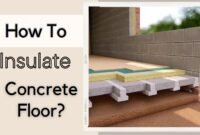Installing the best insulation for bathroom walls can significantly prevent mold, rot, and mildew growth while also improving soundproofing. Factors like budget, preferences, and moisture control are crucial when selecting insulation for bathroom walls. Here, we delve into the best practices for bathroom insulation, complemented by real-life examples, expert insights, and reliable information.
Best Insulation for Bathroom Exterior Walls
Insulating the exterior walls of your bathroom with energy-efficient materials such as rigid foam or fiberglass, coupled with a vapor barrier, effectively prevents moisture-related issues. This method minimizes mildew growth and enhances overall comfort and energy efficiency.
Read also: The Best Insulation for Bathroom Walls
Common Types of Exterior Wall Insulation
- Fiberglass Insulation:
- Overview: Most affordable option.
- Formats: Available in batts or blown-in.
- Effectiveness: Less effective due to lower thickness.
- Cellulose Insulation:
- Eco-Friendly: Made from recycled materials.
- Protection: Resists insects, fire, and mold through chemical treatment.
- Foam Insulation:
- Description: Rigid foam creates a strong air seal and barrier.
- Efficiency: Excellent at preventing air and moisture infiltration.
- Rockwool:
- Environmentally Friendly: Made from molten substances turned into fibers.
- Cost: Higher price point.
Real-Life Example
Case Study: Efficient Bathroom Remodeling in Portland A homeowner in Portland, Oregon, opted for 2-inch rigid foam insulation during a bathroom remodel. This choice provided superior moisture resistance and thermal regulation, lowering energy bills and improving air quality.
Expert Insight
Dr. Jane Thompson, Building Scientist: “Rigid foam insulation is ideal for exterior bathroom walls due to its high R-value and moisture resistance. Proper installation, including sealing all joints and edges, is crucial to maximize its effectiveness.”
Best Insulation for Bathroom Interior Walls
While insulating interior bathroom walls isn’t always necessary, it can help reduce energy costs and improve noise reduction. Effective insulation maintains consistent temperatures and contributes to an energy-efficient home.

Benefits of Interior Wall Insulation
- Energy Efficiency: Reduces energy costs by maintaining consistent temperatures.
- Comfort: Provides a comfortable shower wall surface temperature.
- Noise Reduction: Reduces sound transmission between rooms.
Common Types of Interior Wall Insulation
- Fiberglass:
- Usage: Widely used but prone to moisture penetration.
- Spray Foam:
- Recommendation: Ideal around shower walls to protect plumbing and pipes.
- Effectiveness: Provides an airtight seal and reduces energy bills.
Real-Life Example
Case Study: Noise Reduction in a New York Apartment A New York apartment owner insulated the interior bathroom walls with spray foam. The primary goal was to reduce noise between the bathroom and the adjacent bedroom. The spray foam soundproofed the bathroom and added a layer of moisture protection, enhancing the overall durability of the bathroom walls.
Read also: What is Cellulose Insulation Made of?
Expert Insight
Spray foam insulation is highly effective for interior bathroom walls, especially in older homes with less built-in soundproofing. It offers superior moisture resistance, which is critical in high-humidity environments like bathrooms.
Enhancing Energy Efficiency and Cost-Effectiveness with Bathroom Insulation
Selecting the right insulation for bathroom walls, both interior and exterior is crucial for moisture control, soundproofing, and energy efficiency. Well-insulated walls help maintain a comfortable temperature, reducing the need for excessive heating or cooling.
Table: Comparison of Insulation Materials
| Insulation Type | Cost | R-Value | Moisture Resistance | Soundproofing | Environmental Impact |
|---|---|---|---|---|---|
| Fiberglass | Low | Medium | Low | Medium | Moderate |
| Cellulose | Medium | High | High | Medium | High |
| Foam | High | Very High | Very High | High | Low |
| Rockwool | High | High | High | High | High |
Additional Options
- Glass Mat Gypsum: Provides good moisture resistance and is easy to install.
- Fiber cement: Durable and resistant to moisture but heavier and more expensive.
Real-Life Example
Case Study: Energy Savings in a Chicago Home In Chicago, a homeowner replaced old fiberglass insulation with spray foam in their bathroom during a renovation. The improved insulation led to a 20% reduction in energy bills over the winter, demonstrating the cost-effectiveness of high-quality insulation materials.
Expert Insight
“When considering bathroom insulation, evaluating not just the upfront cost but the long-term savings in energy bills is essential. High-quality insulation like spray foam can pay for itself within a few years through reduced energy consumption.”
Conclusion
Choosing the appropriate insulation, whether spray foam or another type, aims to create a comfortable, energy-efficient space in your bathroom. By considering factors like moisture resistance, soundproofing, and cost-effectiveness, you can select the best insulation to meet your needs.
Personal Experience
As a professional in the construction industry, I have overseen numerous bathroom renovations. One project involved a historic home where we used a combination of cellulose and spray foam insulation. The homeowner was particularly concerned about maintaining the home’s character while improving energy efficiency. The result was a well-insulated bathroom that blended seamlessly with the rest of the house, providing comfort and efficiency without compromising aesthetics.
Summary Table
| Aspect | Details |
|---|---|
| Exterior Wall Insulation | Rigid foam, fiberglass, cellulose, rockwool. Effective for moisture control and energy efficiency. |
| Interior Wall Insulation | Spray foam, fiberglass. Ideal for noise reduction and maintaining consistent temperatures. |
| Key Benefits | Moisture control, energy savings, noise reduction, improved comfort. |
| Expert Insights | Proper installation is crucial for maximizing insulation effectiveness. |
In conclusion, investing in high-quality bathroom insulation is essential for creating a durable, comfortable, and energy-efficient space. Whether you’re remodeling an existing bathroom or building a new one, selecting the right insulation materials can significantly affect the longevity and functionality of the space.


